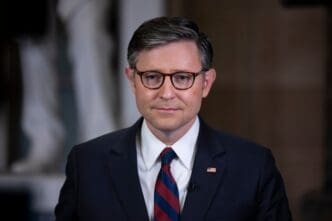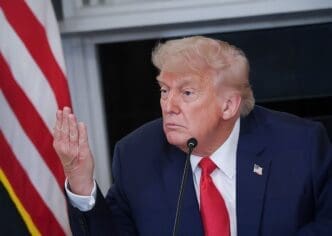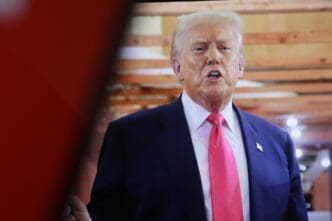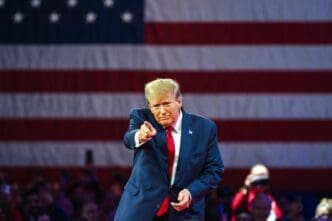Executive Summary
- President Trump announced that Intel agreed to provide the U.S. government with a 10 percent stake in the American chipmaker.
- The agreement followed President Trump’s earlier call for Intel CEO Lip-Bu Tan to resign due to concerns raised by Sen. Tom Cotton regarding Tan’s investments in Chinese companies and a previous company’s export control violations.
- President Trump proposed the 10 percent government stake during a subsequent meeting with Tan, which he described positively.
The Story So Far
- The agreement for the U.S. government to take a 10 percent stake in Intel stems from the administration’s broader efforts to support American chipmakers and address national security concerns. This particular deal was catalyzed by President Trump’s direct intervention following concerns raised by Senator Tom Cotton regarding Intel CEO Lip-Bu Tan’s investments in Chinese companies and his previous company’s export control violations, which prompted Trump to call for Tan’s resignation and subsequently propose the government stake.
Why This Matters
- The U.S. government’s acquisition of a 10 percent stake in Intel, directly negotiated by President Trump, marks a significant and potentially unprecedented level of state intervention in a key private technology company, driven by national security concerns regarding China and a push to strengthen American chipmaking leadership. This action could establish a new precedent for government involvement in strategic industries, reshaping the dynamic between the state and the private sector in critical technology sectors and signaling a more aggressive approach to securing vital supply chains.
Who Thinks What?
- President Trump’s administration views the 10 percent stake in Intel as a positive outcome stemming from direct intervention to support American chipmakers, address national security concerns related to the company’s leadership, and improve its market competitiveness.
- Senator Tom Cotton raised concerns about Intel CEO Lip-Bu Tan’s investments in Chinese companies and a previous company’s violation of export controls, which initially prompted the administration’s scrutiny of Intel.
- Intel CEO Lip-Bu Tan agreed to “consider” the U.S. government taking a 10 percent stake in the company following direct discussions with President Trump, amid issues regarding Intel’s market position and past controversies.
President Trump announced Friday that Intel has agreed to provide the U.S. government with a 10 percent stake in the American chipmaker. This development follows the administration’s consideration of taking a stake in the company, a move confirmed earlier this week by Commerce Secretary Howard Lutnick.
Details of the Agreement
Trump offered further details on how the agreement materialized, linking it to his earlier call for Intel CEO Lip-Bu Tan to resign. The President had initially made this call earlier in the month, citing specific concerns.
These concerns were reportedly raised by Sen. Tom Cotton (R-Ark.), who highlighted Tan’s investments in Chinese companies. Cotton also pointed to Tan’s previous role as CEO of Cadence Design Systems, which recently pleaded guilty to violating export controls by selling chip design technology to a Chinese military university.
Trump recounted his response to these concerns, stating he believed Tan “should resign.” Following this, Tan met with Trump. The President described the meeting positively, saying he “liked him a lot” and considered him “somewhat a victim.”
It was during this discussion that Trump proposed the U.S. government receive a 10 percent stake in Intel. Trump noted that Tan indicated he “would consider that.” The President also commented on Intel’s market position, stating the company “has been left behind” compared to competitors like Nvidia, led by CEO Jensen Huang.
The agreement for a 10 percent government stake in Intel comes amid the administration’s efforts to support American chipmakers and address concerns over industry leadership and national security. The deal was finalized after President Trump’s direct intervention and discussions with Intel’s leadership regarding the company’s future and past controversies.








